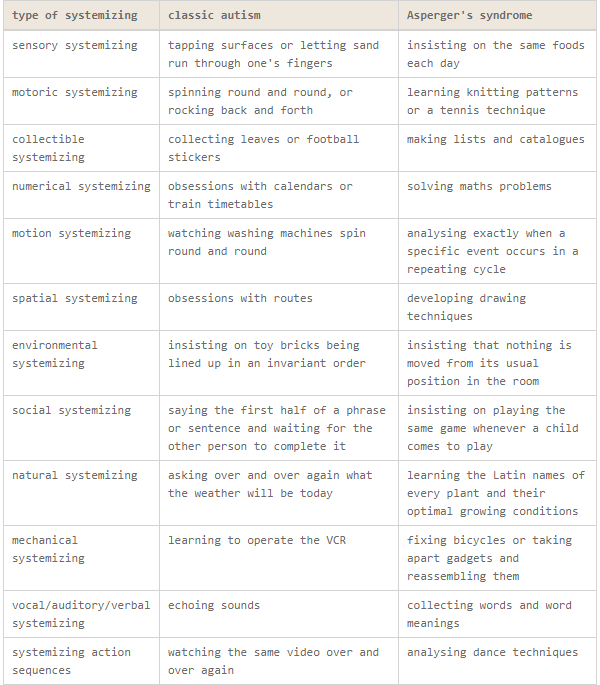Systemizing is a term that is part of the empathizing–systemizing theory by Simon Baron-Cohen.
Systemizing
Systemizing is the drive to analyze or construct systems.[1]The systemizing quotient: an investigation of adults with Asperger syndrome or high–functioning autism, and normal sex differences According to Baron-Cohen’s research, the systemizing mechanism is set too high in autistic people. As a result, they can only cope with highly lawful systems, and cannot cope with systems of high variance or change (which includes “the social world of other minds”), and they appear change-resistant.[2]The hyper-systemizing, assortative mating theory of autism This strong inclination towards systemization is what is called hyper-systemizing.
Hyper-systemizing
Hyper-systemizing does not only denote rigidity and inflexibility, however, as it also predisposes individuals to show particular talents, and is part of the cognitive style of autistic people.[3]Talent in autism: hyper-systemizing, hyper-attention to detail and sensory hypersensitivity
The hyper-systemizing theory argues that the excellent attention to detail is directed towards detecting ‘if p, then q’ rules (or [input–operation–output] reasoning). Such law-based pattern recognition systems can produce talent in systemizable domains.


Comments
Let us know what you think!